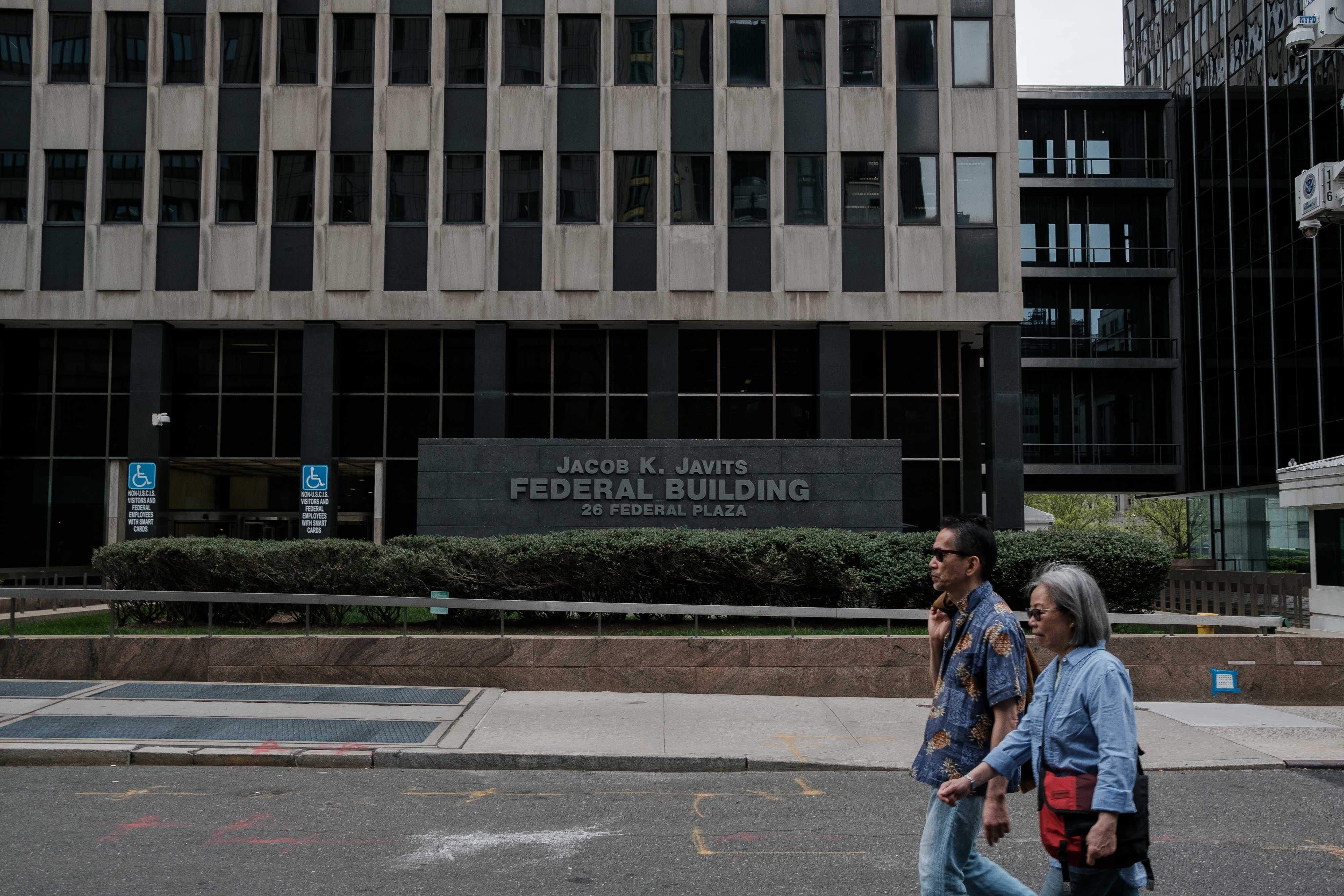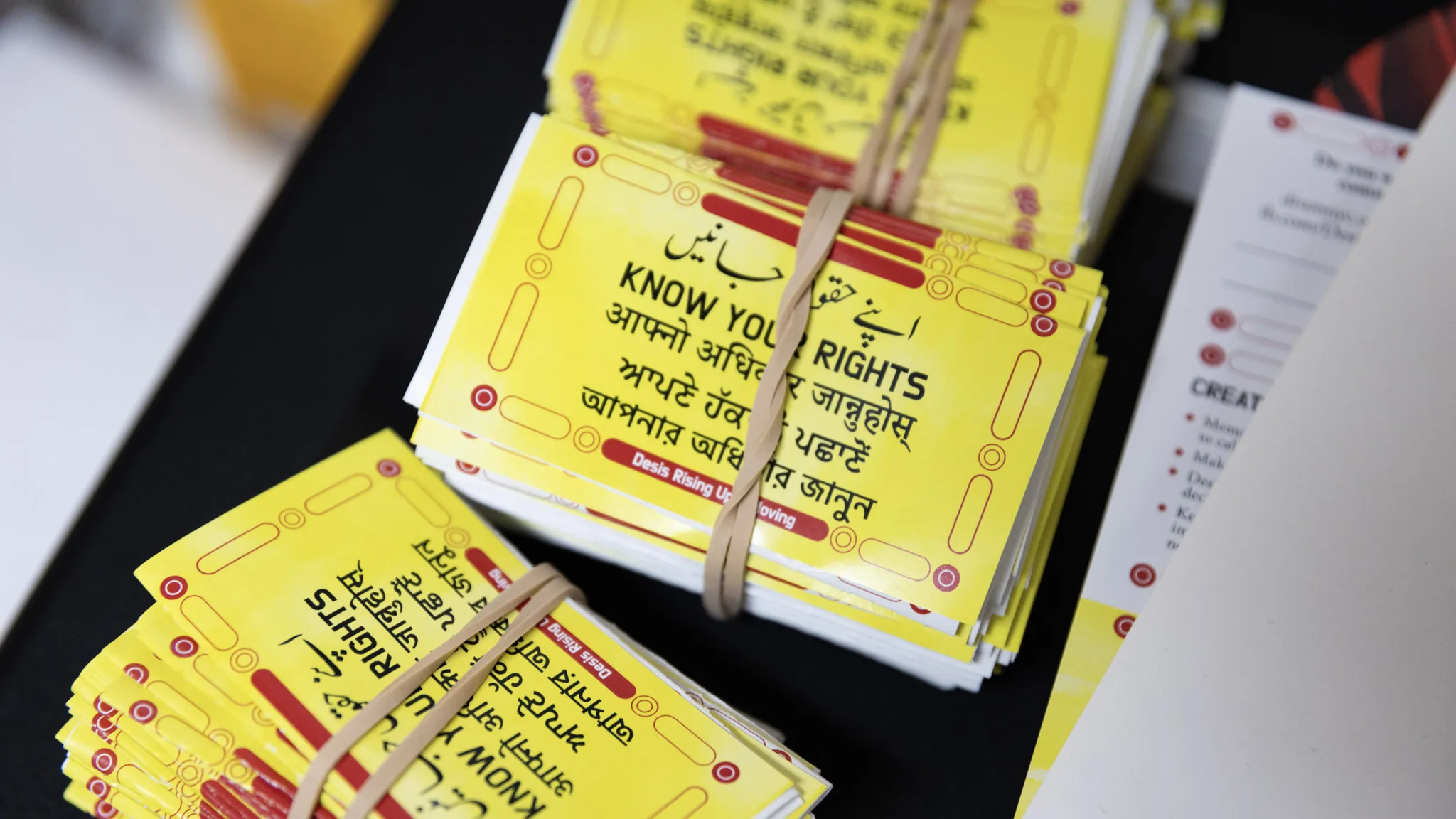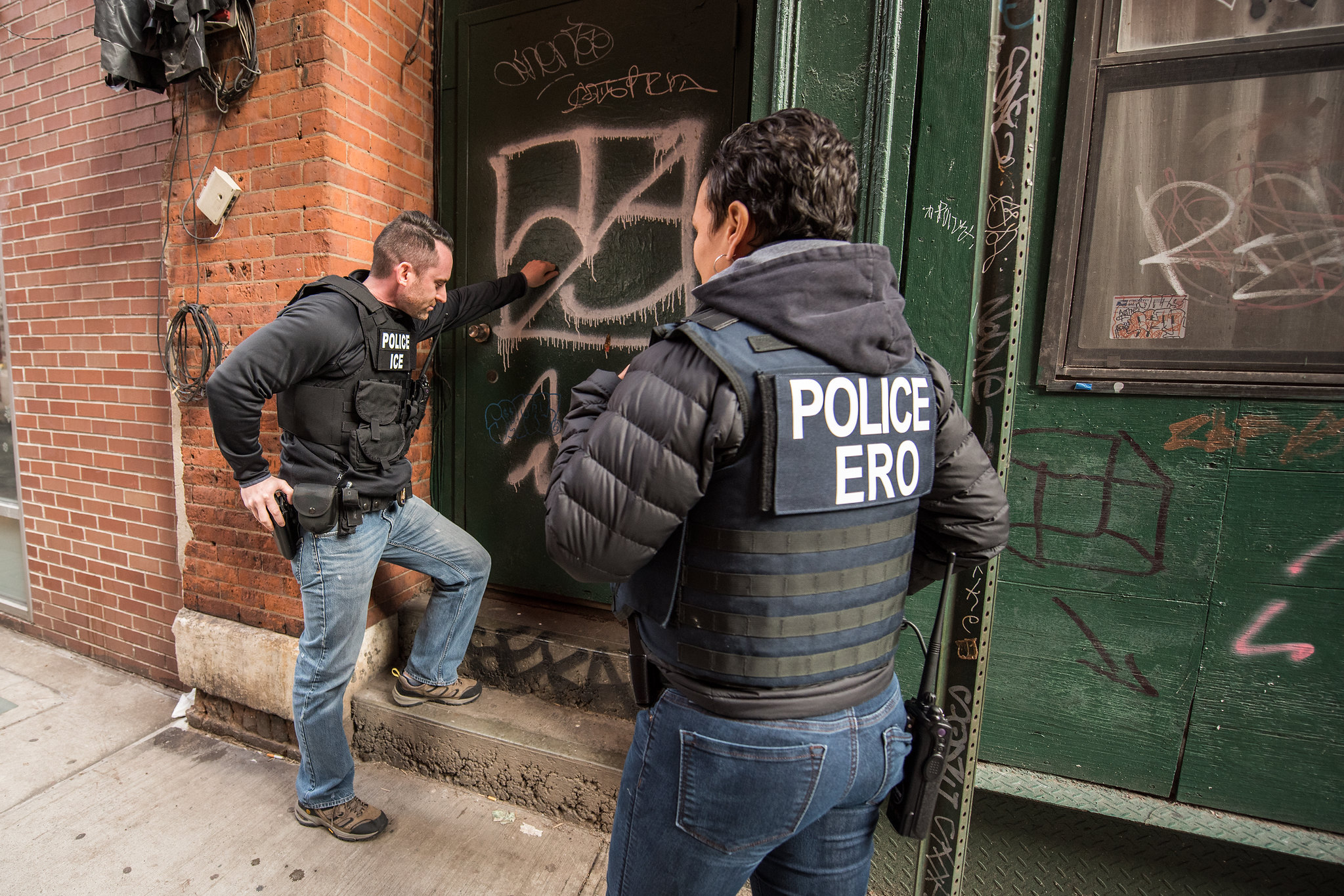Twice a month, a Los Angeles-based nonprofit called CIELO holds virtual trainings for interpreters of indigenous languages, including close to a dozen who join in from New York. Their sessions are sometimes consumed by discussions on how to best interpret legal jargon, such as “illegal alien,” for which no direct translations exist in their native tongues. “The word ‘alien’ — there is no word directly like that in Zapotec,” explained Odilia Romero, the nonprofit’s founder and a longtime interpreter of the Mexican indigenous language. “I would have to say, ‘an unwanted person in this pueblo or in this community,’” Romero said. “So, I would have to give it that context: you’re not wanted, you’re an alien, you’re an outside thing.”
Organizations like CIELO are a vital resource to New York, where there is an acute shortage of indigenous interpreters. Last year, CIELO arranged more than four thousand interpretation assignments for legal, medical and other institutional settings, many of them conducted remotely by interpreters for clients in New York.
The city is home to a panoply of indigenous languages – and their countless variants – with origins in Latin America: K’iche’ and Mam from Guatemala; Garifuna from Honduras, Belize and also Guatemala; Kichwa from Ecuador; and Mixtec and Nahuatl from Mexico, among various others. Many of their speakers are fluent in neither English nor Spanish, but for a long time, their need for interpretation services has gone largely unnoticed.
Also Read: TNT Immigrants and the Undocumented Filipino Experience in the U.S.
Daniel Kaufman, a linguist and co-founder of the Manhattan nonprofit Endangered Language Alliance, said that indigenous immigrants are often mistakenly assumed to be part of a monolithic Spanish-speaking group. With no reliable demographic information on these communities, and a lack of awareness among them that they have a right to request interpretation, community efforts to provide local and in-person interpretation services have been difficult to sustain.
The need for interpreters is perhaps most palpable when it comes to immigration cases, which often involve building asylum claims that require a particularly high standard of proof. “In most cases we’re filing hundreds and hundreds of pages before the court to prove to the judge that this person’s story is real, that they’re believable, that they are credible,” said Molly Lauterback, a senior staff attorney at the public defense office Brooklyn Defender Services.
The nonprofit’s immigration practice is part of the New York Immigrant Family Unity Project, an initiative that provides free legal representation to detained immigrants facing deportation. Fighting a typical deportation case, Lauterback said, may require hours-long interviews with clients and involve collecting an array of documents from declarations to photographs to psychological evaluations. The process becomes highly restricted, if not impossible, when language is a barrier.
This was the case last year with one of Lauterback’s clients – an immigrant from Mexico and a native speaker of Mayan Tzotzil. It was challenging enough for Lauterback to find someone who spoke the language. It was even harder to set up in-person visits at the Orange County Correctional Facility in Goshen, New York. Phones were not permitted in the visiting booths, and the video conferencing system available for attorney-client conversations did not allow a third party to be dialed in. What’s more, Lauterback said, all removal hearings were conducted in Spanish only, even after her client had continually stated he wasn’t fluent in the language.
Also Read: Language Gap Drives Growing Asian American Poverty in NYC
After waiting for two months in detention to have language services arranged, her client decided to abandon his case and return to Mexico. “If he spoke Spanish enough there is no question in my mind that he would have made the decision to continue fighting his case, but he couldn’t take it,” Lauterback said, adding that his case was all too common.
Even when an interpreter is available, getting someone who can skillfully do the job remains a challenge. In immigration courts, judges are responsible for ensuring that interpretation at hearings is adequate. But when it comes to indigenous languages, Maya Barak – an associate professor of criminal justice studies at the University of Michigan-Dearborn – said the courts have outsourced the vetting process to private contractors. “They’ve sort of said ‘we’re going to hire this company that’s going to provide us with interpreters and they are going to do the quality control when it comes to the training, education and certification of these interpreters,’” she said.
Since 2015, the company S.O.S. International has provided language services to the Department of Justice’s Executive Office for Immigration Review, which oversees immigration proceedings. But the services can put clients at a clear disadvantage, according to Barak’s research, which interviewed nearly two dozen East Coast immigration attorneys working on deportation hearings. That disadvantage, her research found, became especially profound when the services were performed remotely.
Across New York state courts, hospitals, and city agencies, interpretation services – for indigenous languages or otherwise – are also often provided through private contractors and telephonically. A spokesperson for the Mayor’s Office of Immigrant Affairs, which works with city agencies to advance language access said, “the scale and demand is so great and vast, agencies need to be able to contract with entities that can support their volume of requests and the diversity of languages.”
In the case of rare indigenous languages, the companies often end up contacting the Endangered Language Alliance. Despite having initially set out to pursue language documentation projects, over the past decade, ELA has been supporting the provision of interpretation services in the city by building a small network of interpreters and referring them to these companies – and sometimes to courts directly – without taking a cut, according to Kaufman.
The Mexican arts and culture nonprofit Mano a Mano, in upper Manhattan, has been doing the same. Around 2011, the program’s executive director, Juan Aguirre, started getting puzzling calls from courts and hospitals claiming they had issues communicating with Mexican immigrants in Spanish. Some of the callers went as far as to suggest it might be due to the immigrants’ mental or speech problems. But when Aguirre asked them to name the Mexican towns many of these immigrants had come from, he realized and explained to them it was a matter of language differences.
Also Read: Native American and Indigenous Immigrant Groups Unite to Fight Hunger
As the number of calls for interpreters grew, Mano a Mano created its own list of up to 80 indigenous speakers who were willing to do the job. But maintaining this network proved to be difficult: the interpreters never made enough money to make a sustainable profession out of it. That’s in part because indigenous languages are so diverse that a single interpreter would only ever receive sporadic assignments. The Nahuatl group of languages alone has thirty distinct language varieties, some of which are mutually unintelligible. Mixteco has more than fifty. But, Aguirre said, few requesters understood these critical nuances.
Additionally, paychecks from the companies became spotty and delayed. Aguirre, who took care of sending invoices on behalf of interpreters, said it took up to six months for a couple of them to get their checks; and up to a year for another. Increasingly, interpreters decided to drop out.
For Irwin Sánchez, the work was exhausting. For more than a year around 2013 he traveled from Queens to the Bronx on his days off from working in restaurants to interpret for Nahuatl speakers in family and criminal courts. He would sometimes interpret for up to eight hours, relaying the defendants’ statements in Spanish for another interpreter to repeat them in English and vice versa.
While Spanish interpreters were allowed to switch out in shifts during day-long hearings, Sánchez, as the only Nahuatl speaker available, had to stay put. “I never stopped talking,” he recalled. That was until he overheard an offensive comment from a defense attorney. “She asked if I had a high enough I.Q., because my English wasn’t perfect,” he said. “That was the drop that made the cup run over. I can’t work where I am being insulted.”
The next day, Sánchez did not show up. He received calls, and an email from the lawyer herself, asking that he continue the interpretation assignment. But Sánchez decided not to go back. He’s now a chef at a Midtown bar, Under the Volcano.
Aguirre said it wasn’t uncommon for interpreters to feel uncomfortable at work. Some complained that they were often yelled at by lawyers who questioned the accuracy of their work. “It’s an environment where there is a lot of pressure. Some people don’t want to be there and they don’t get paid enough to be putting up with these types of things.”
Also Read: Court Cases in New York Are Scheduled Out to 2023, Leaving Asylum Seekers Hopeless
At the start of the pandemic, Mano a Mano’s network of interpreters began to falter. As hearings and doctor appointments got postponed, the organization stopped receiving as many calls, while most of its interpreters moved away, changed phone numbers, and lost touch. “There is demand, these cases will continue,” Aguirre said, but restarting the network would require recruiting interpreters from zero. And there isn’t enough support. “We looked for grants to sustain the program but when we spoke with foundations and told them about indigenous languages, they didn’t believe us. They asked for information and numbers and I told them – there are no numbers,” he said.
He was optimistic that a new network of interpreters he had heard of, the South Bronx-based collective Colibrí, could take the lead moving forward. Maria José Prudente, an interpreter of Mixteco, is part of the collective. For more than a year, she and about two dozen indigenous immigrants have been attempting to grow the network so that they can provide these services locally. It’s unclear how much it will take to expand beyond the work that ELA or Mano a Mano has already done. But the Mayor’s Office of Immigrant Affairs, which has previously partnered with local nonprofits for multilingual outreach to immigrant communities, said it’s looking into the possibility of offering funding support for such networks. “The City is aware of many of these initiatives and have had conversations with various groups about the development of interpreter cooperatives and we’re learning more and exploring this,” a spokesperson for the office said.
On Monday, the City Council passed a budget for fiscal year 2023 that included $5 million for launching language services cooperatives and a community interpreter bank for limited diffusion languages, including those of Latin American origin. The proposal, brought forward by Council Member Julie Won and a coalition of organizations, would help city agencies to more easily connect with the community-based organizations that are arranging interpretation services, rather than private contractors primarily offering telephonic services.
“We know these nonprofits have been asked by agencies many times to do this type of interpretation work without getting compensated,” said Lorena Lucero, Chief of staff for Council Member Won. “This is an opportunity for organizations to be recognized as partners,” with the goal, she said, to get them paid.
For now, the interpreters are leaning on support from CIELO, which traveled to the city last December for a workshop with indigenous speakers that they are planning to replicate in the near future. Prudente herself received her training – and now her interpretation assignments – through CIELO. Even though she lives in Brooklyn, most of her assignments are done remotely for cases involving recently arrived immigrant children in California. It’s not that there’s no need for her work in the city, she said. But CIELO has “obviously worked hard to visualize the needs of the community in front of governmental institutions” in California. She’s hopeful that, in time, Colibrí can do the same.
Update: This article was updated to include information about new city funding for a translation program.














